10/04/2019
I lost Jeff Cooper for a while. He was residing in my tactical rifle information section was moved to the favorite authors section and somehow made his way into the thin books with intact dust covers section. Unfortunately, that book case collapsed under stack weight and he was temporarily moved to the books I have not read for a while section. In any event, he is now residing on my book stand and opened to the chapter titled “The Instrument”. Keep in mind his words were committed to writing in 1997, twenty three years ago, and after an adult life time of accumulated opinion… Cooper’s, not mine.
In “The Rifle” Cooper defined not a specialize weapon of war, but rather a general purpose rifle that would not be limited by specialized features. Cooper’s general purpose rifle would serve for hunting or fighting, powerful enough to kill with a target mass up to 1,000 pounds. It was following this criteria that he dismissed the “miniature calibers such as the 223”, Cooper’s words, not mine, and advanced the 30-06 Springfield as the starting point for an acceptable cartridge. Again, his words not mine but he did advance a realistic cap for the cartridge by stipulating it is not enough gun for Buffalo (Cape), rhinoceros or elephant, all which he considered specialize targets.
The core of the general purpose rifle was a bolt action repeater. Cooper acknowledged the self loading rifle’s potential capability, but set them aside for two reasons. The first was the increased complexity of an auto loading firearm, which would increase required maintenance and reduce reliability. The second reason was Cooper’s belief that an auto loader would not increase effective rate of fire over a bolt action rifle in the hands of a trained rifleman.
Cooper felt that a telescopic sight was beneficial in that they helped to see the target more clearly. However, he did not think this was synonymous with, or proportional to magnification. 2x to 4x was probably beneficial, but every move away from no magnification reduced field of view and speed of use. Forward mounting, scout mounting, was done for no reason other than to permit stripper clip loading through the ejection port as speed of loading and reloading was important.
| Ruger Scout Rifle | |
| Model # | 6837 |
| Origin | Newport, NH |
| Caliber | 450 Bushmaster |
| Action | Bolt action |
| Hardware | Matte Black Alloy Steel |
| Stock | American Walnut |
| Mag Capacity | 4 AI Style |
| Barrel | 16.1″ 11/16″-24 Threads |
| Twist Rate | 1:16″ RH 5 Groove |
| Rear Sights | Adjustable Peep |
| Front Sight | Protected Blade |
| Scope Mounting | Ruger System Rings & Rail |
| Weight | 6.6 lbs |
| Overall length | 37″ – 38.5″ |
| Pull Length | 12.75″ – 14.25″ |
| MSRP | $1,039 |
Red dot sights, of any type, were seen as having potential. However, written from a 1997 perspective, short battery life and fragility of assembly defined them as yet to be proven as reliable or useful.
Rifle weight and length were important, as an excess of both would result in a loss of utility. Length was stipulated as under 39 inches, with weight determined by holding the rifle in a shooter’s grip and extending it out from the shoulder with the barrel vertical for 60 seconds. Too much required effort suggests the rifle is too heavy for the shooter.
Cooper’s thinking was that a short length of pull stock is better than long. He cited military rifles as having a short stock so that they would fit anyone. He stated that sporting rifles were typically too long for the average shooter, which made them unwieldy… the rifle, not the shooter.
Cooper, at 6’2″ in height, liked the 1903 Springfield rifle even with its short stock and the fact it was punishing for him to shoot… again, a Marine through two wars. Cooper also felt the rifle should accommodate a good shooting sling. His preference was a three point Ching sling that could easily be detached in dense cover. A clean trigger with a pull between 40 and 50 ounces, single or two stage, was very important.
Overall, Cooper felt the rifle should not be intimidating to shoot and he did not care for muzzle brakes. He felt they introduced greater noise levels and recoil management with an unbraked rifle could be taught. Still, he felt the rifle should be enjoyable to shoot and carry and with good line of sight in a comfortable hold.
A journey through the Ruger Scout Rifle. Yes, just like Fantastic Voyage
The Ruger Scout is a stout bolt action rifle. It is a controlled feed design, so the cartridge is held to the bolt face almost immediately as it is pushed from the magazine. The full length claw extractor clears even tough extraction casings from the rifle’s chamber without damaging case rims. The bolt body and handle are fashioned from one piece of stainless steel. The ejector is fixed in the receiver, so ejection force is under the control of the shooter. Magazines are AI compliant.
The Ruger M77 action used in the Scout Rifle is patterned after the 120+ year old Mauser action. Ruger, never frivolous in designs has held onto the good, finessing the design and greatly refining and enhancing materials and process. The horizontal swing safety, shown in the “Fire” position, is three position. Rotate back one position and the rifle is in the “Load/Unload” position with safety on, but bolt free to cycle. Rotate full aft and the bolt is locked and the firing pin is mechanically prevented from moving forward.
The Ruger is shipped with an adjustable peep sight mounted rear and a guarded blade at the muzzle. Adjustable for windage and elevation, one full rotation of windage adjustment results in a 5″ shift at 100 yards. So it is easy to move in small increments, but the shooter can shift point of aim significantly quickly if so desired. Each up or down 180 degree rotation of the aperture results in a 1.25″ vertical point of aim shift at 100 yards. It is a simple, durable sight set that is more than enough for most mid and large game hunting out to 100 yards or so.
But wait, there is so much more!..!!
Ah yes, the Swiss Army knife of firearms. There is the peep sight system previously described. A scout scope with extended eye relief can be affixed to the forward mounted Picatinny rail. In this case, with C-Thru mounts which do not obstruct metallic sight, line of sight… even if a small amount of neck craning is involved when looking through the scope. Ruger mount system rings are included with the Scout Rifle which bridge the receiver for traditional scope mounting. Finally, with an inexpensive stub rail that mounts in place of the rear peep sight, a red dot sight can be mounted. Nice to have this level of flexibility.
The AI system magazines for the 450 Bushmaster are 308 Winchester standard. The only difference in use is that a 5 round 308 Win magazine holds 4 450 Bushmaster rounds. ShopRuger.Com offers 5 round and 10 round AI standard 308 Winchester magazines. The magazine latch resides at the front of the trigger guard; positive latching, clean releasing. Both trigger guard and magazine well are constructed from durable, non-corroding glass reinforced nylon.
While Cooper seemed like the kind of guy who isn’t phased by misdirected recoil or having to adapt to a short length of pull firearm, however, many members of the younger generation only see the down side in these issues. For them, Ruger engineers have seen fit to design an adjustable length of pull system for select Ruger firearms, the Scout being one of them. Subsequently, three 1/2″ recoil pad spacers are included with the Scout, one preinstalled.
The Ruger Scout is shipped with a very effective Ruger Precision® Rifle Hybrid Muzzle Brake in place at the end of the 16.1″ hammer forged barrel. 1″ in diameter and 2.2″ in length, including 5/8″-24 mount, its ports are longer than more compact varieties of brakes which contributes to the brakes 58% reduction in recoil. The forward side ports lesson brake associated noise levels. Easy enough to remove to install other muzzle devices, but appreciated when it is installed.
The 450 Bushmaster
The 450 Bushmaster began life as the .45 Professional, a Jeff Cooper concept developed into a cartridge by Tim LeGendre of LeMag Firearms LLC. Cooper would not own an AR-15 because he believed the 5.56 NATO was anemic. Cooper felt the threshold for acceptability was a big bore cartridge for the semi auto rifle was one that could reliably make on shot kills on big game at 250 yards. LeGendre produced the combination and Cooper owned his first AR-15 1).
The .45 Professional was licensed to Bushmaster… when they were an independent company incorporated in Maine. Bushmaster went to Hornady to have the cartridge commercialized for them. Hornady asked LeGendre for permission to change the name to 450 Bushmaster; permission granted. Hornady asked permission to shorten the case to permit the use of long Hornady 250 grain SST bullets without exceeding spec cartridge overall length; permission granted. It is an interesting cartridge that exceeded Coopers 250 yard, one shot kills on big game goals.
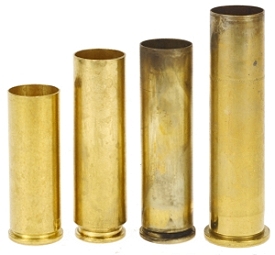 I think we know one another well enough that I don’t have to clean honest brass before I can use it for illustrative purposes. Left to right: 454 Casull, 450 Bushmaster, 460 S&W, and 45-70 Gov’t.
I think we know one another well enough that I don’t have to clean honest brass before I can use it for illustrative purposes. Left to right: 454 Casull, 450 Bushmaster, 460 S&W, and 45-70 Gov’t.
| SAAMI Cartridge |
Max Bullet D “ |
Max Case Length” |
Max COL” |
Max H2O Capacity Grains |
MAP KPSI |
| 454 Casull | 0.452 | 1.383 | 1.765 | 46.8 | 65.0 |
| 450 Bushmaster | 0.452 | 1.700 | 2.260 | 60.0 | 38.5 |
| 460 S&W | 0.452 | 1.800 | 2.290 | 60.0 | 65.0 |
| 45-70 Gov’t | 0.458 | 2.105 | 2.550 | 65.3 | 28.0 |
The 454 Casull, for anyone who has spent time shooting a six gun chambered for the cartridge can attest, is a cannon. Not huge in capacity, but big on pressure. While the 450 Bushmaster is shorter than the 460 S&W, the capacity is the same. How might that be? The 450 Bushmaster case begins at 0.500″ and tapers to 0.480″, while the 460 S&W is a straight wall 0.480″ case.
What gives the 460 S&W more steam than the 450 Bushmaster is the very high MAP pressure. The 45-70 Gov’t is in the picture because Ruger just purchased Marlin and I have high hopes for new model rifles in 45-70 Gov’t… OK, and because is is a big case, yet only 5 grains greater in capacity than the 450 Bushmaster.
Other Cooper words of wisdom
I tried the “Firing grip, muzzle up, extend arm from shoulder, hold for one minute without undue strain test. Piece of cake. Light rifle and I am a crusty old guy who hasn’t yet lost an appreciation for manual labor. It is a fast handling little carbine, not unlike a short barrel Enfield Jungle Carbine, or an early sporterized 1903 Springfield or 98 Mauser. With the exception of that crank on the side of the receiver, it actually tracks like one of my Marlin lever action rifles.
Do I enjoy the rifle? Hell yeah! It feels and looks like the kind of rifle you hold in one hand and pull the pin out of a grenade with your teeth with the other, just before charging the enemy… in an old WWII tribute movie. It is a compact thumper that would top the list of rifles to have in the event of a bailout over the Alaskan wilderness. Tough little rifle. I am now wandering off to put together 450 Bushmaster handloads so I can finish the live fire segment. AKA Part II.
1). Woodard, W. Todd. Cartridges of the World: A Complete and Illustrated Reference for Over 1500 Cartridges. F+W Media.

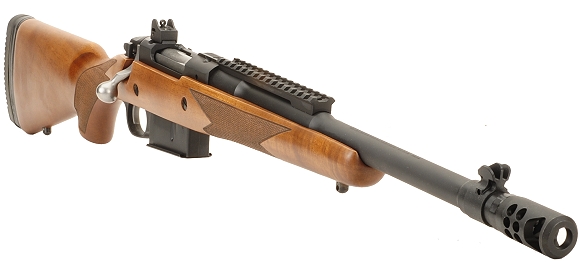
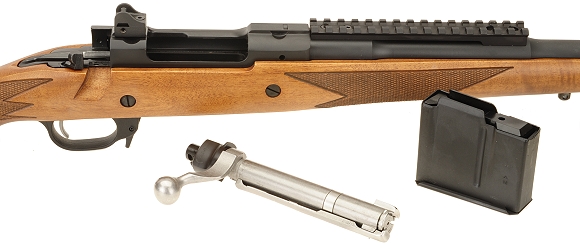
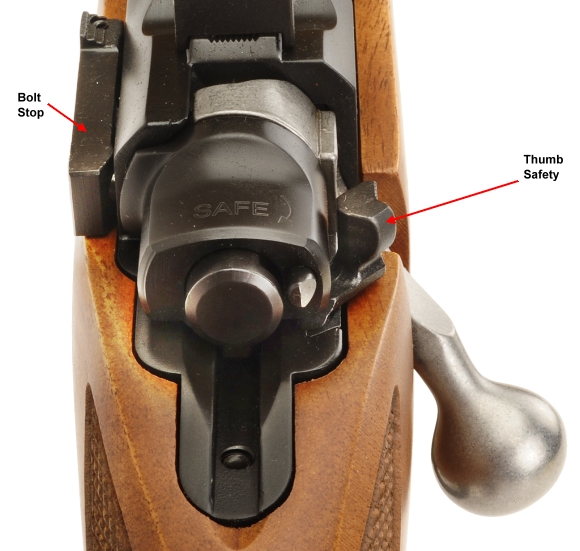

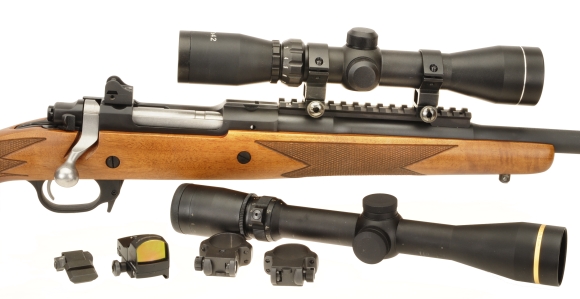
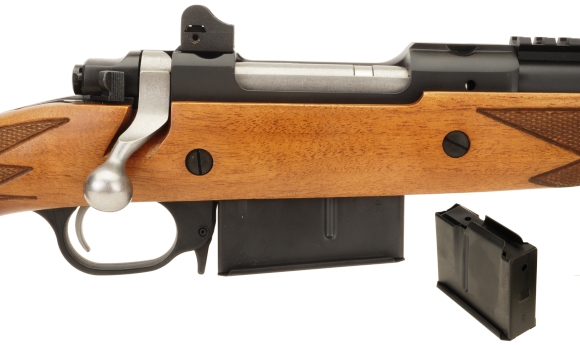
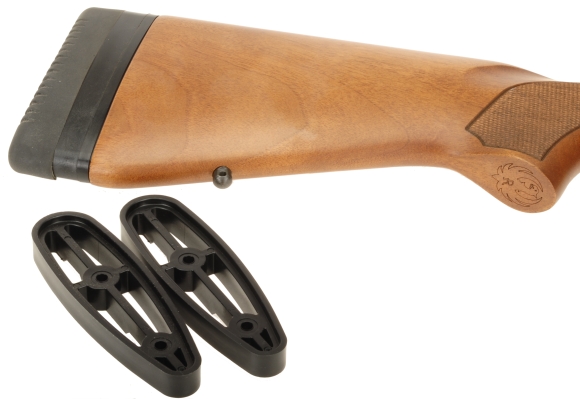
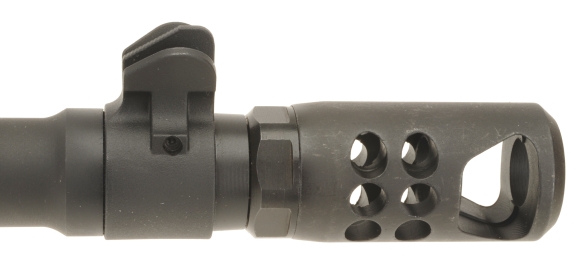

Email Notification